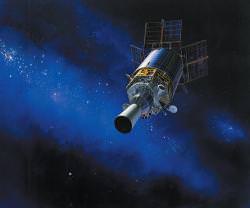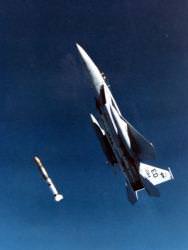What if there was a Pearl Harbour-like, pre-emptive strike against orbiting satellites? What if our quarrels on the ground spill into space? This is no longer a storyline for the next sci-fi movie, early warning systems are currently being developed to defend satellites, low Earth orbit satellites are being quickly and accurately shot down by the US and China, plus satellite technology is becoming more and more valuable as a strategic target. Like all wars there is a losing side, but in the event of a war in space, we’ll all be losers.
Its one thing watching a space battle in a sci-fi movie, it’s quite another to see it happen in reality. The critical thing about blowing stuff up in space is it produces a lot of mess and will leave a nasty legacy for future generations. Space debris is becoming a serious problem and should there be some form of orbital war, the debris produced may render space impassable.
As satellite technology becomes more and more important for communication and navigation, should a pre-emptive attack by an aggressive state be carried out, blowing up satellites in low Earth orbit (LEO) will become a priority. Imagine if a nation lost its ability to communicate with its armed forces around the globe, or if strategic missiles were suddenly rendered useless, the state being attacked will be electronically blinded.
In an article posted on The Space Review by Taylor Dinerman, some important factors are addressed. Significantly, should there be a large-scale attack by a rogue nation on a US LEO satellite network; the disruption caused to military communications could be catastrophic. Indeed, the disruption caused to such a satellite network may be desirable enough for small nations to pursue anti-satellite technology.
But what if the worst does happen and satellites become the primary targets for “hot” wars down here on Earth? What can be done to reduce the amount of debris produced? After all, cutting down on space debris is an international concern, having a “scorched earth” policy in space would ultimately be self-defeating. Dinerman examines some possible solutions:
- Develop highly destructive anti-satellite missiles. If the missiles carry warheads of sufficient destructive energy, satellites may be completely pulverized, rendering the mass of the orbiter into harmless bits of dust.
- Build an early warning system and highly manoeuvrable military-design satellites. Expensive, in money and fuel, but worth it should there be a space war.
Regardless of whether there will be a future space battle in Earth orbit, it is quickly becoming the responsibility of the military and private companies of all nations to design and build critical satellites with some built-in ability to protect themselves from attack. And this isn’t only to maintain communications or guide ballistic missiles to targets; it is to safeguard mankind’s ability to access space by reducing the risk posed by the ever increasing population of space debris currently trapped in orbit.
Should the worst happen, and the space-ways become so heavily congested with debris, at least you’ll be able to track it with Google Earth!
Source: The Space Review: “Messy battlefields” by Taylor Dinerman


